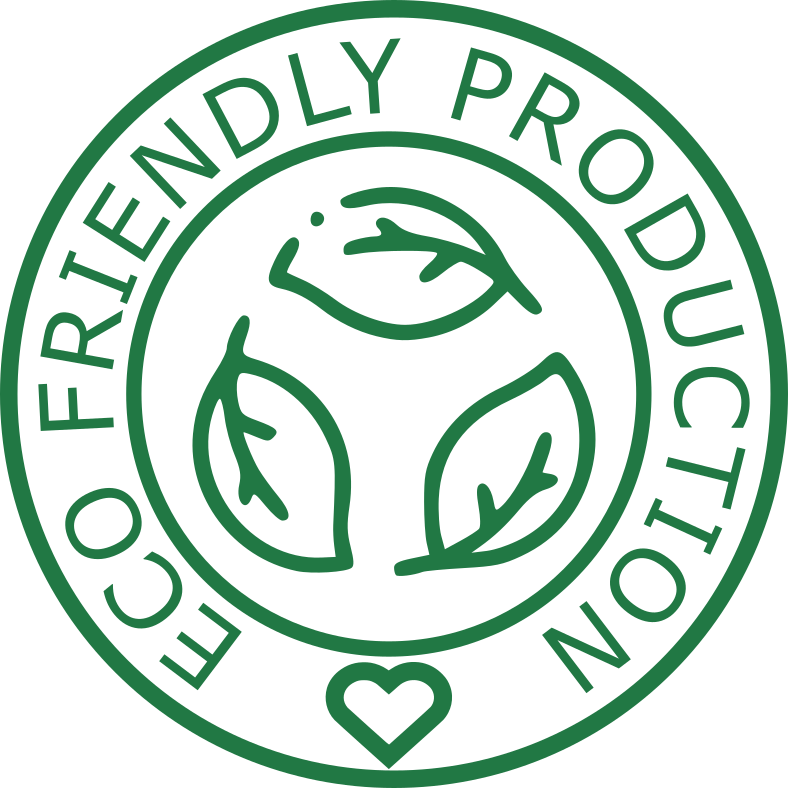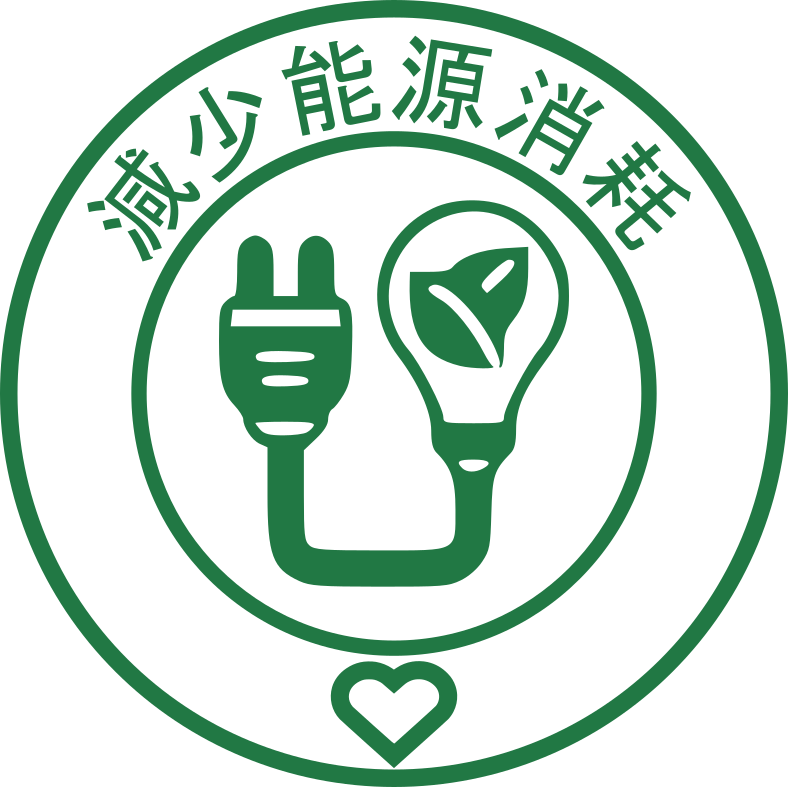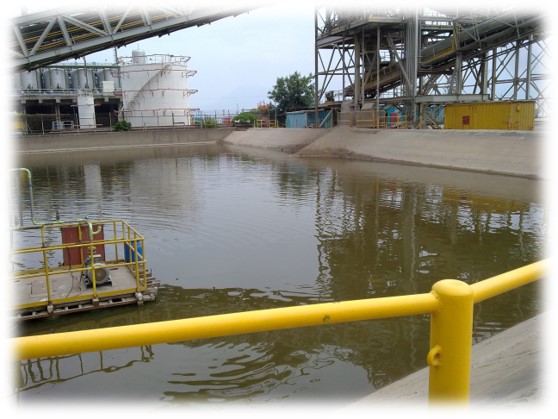Our Tap Shek Kok cement plant operates under licenses issued from Environmental Protection Department. They cover emission limits at all fugitive dust emission point and the quality of wastewater disposed into the nearby reception zone. We also obtained a waste disposal license as the plant is a final disposal facility of treated Marpol (Marine Pollutant) waste. Monitoring equipment is installed to closely monitor our emission level to ensure that we completely comply with legal requirements. An effective environmental management system is adopted to ensure that our environmental policies are implemented effectively and any environmental problem is being addressed promptly.
我們的踏石角水泥廠,是在環境保護署發出的牌照下運作,牌照涵蓋了所有揚塵排放點的排放限值,以及排放到附近接收區的廢水質量。我們還獲得了Marpol(海洋污染物)的廢物處置許可證,本廠是根據該許可證下,負責處理這類污染物的最終處置設施。安裝監控設備以密切監控我們的排放水平,以確保我們完全符合法律要求。我們採用有效的環境管理制度,確保我們的環境政策得到有效執行,任何環境問題都可以得到及時解決。
The following environmental aspects and impacts are identified and are continuously addressed by our improvement plans:
我們的改進計劃確定並持續解決以下環境因素和影響:
















A product of any coal fired combustion process is acidic gas. The common acidic gases are hydrogen chloride (HCl), nitrogen dioxide (NO2), and sulphur dioxide (SO2). If these acidic gases emitted to the atmosphere, they will damage the human respiratory system and cause harmful acid rain formation.
任何燃煤燃燒過程的產物都是酸性氣體。常見的酸性氣體有氯化氫(HCl)、二氧化氮(NO2)和二氧化硫(SO2)。如果這些酸性氣體排放到大氣中,它們會損害人體呼吸系統並導致有害的酸雨形成。
In order to deal with this pollution threat, flue gas desulphurization units (FGD) are installed in some power generation units to effectively remove this acidic gas. Green Island Cement, using its expertise in mineral grinding, prepares a high quality limestone powder (CaCO3) for the power plant to use when it cleans up its flue gas.
為了應對這種污染威脅,一些發電機組安裝了煙氣脫硫裝置(FGD),以有效去除這種酸性氣體。青洲英坭利用其在礦物研磨方面的專業知識,製備了一種高質量的石灰石粉末(CaCO3),供發電廠在清理煙氣時使用。
The SO2 is converted into a sulphate salt called gypsum (CaSO4) by a neutralization reaction with limestone. FGD Gypsum is a solid waste from power plants and which would otherwise be disposed to landfill and become the burden to the environment.
SO2通過與石灰石的中和反應轉化為稱為石膏(CaSO4)的硫酸鹽。煙氣脫硫石膏是發電廠產生的固體廢物,一般會被送往堆填區並成為環境負擔。
Green Island Cement conducted extensive research on this by-product FGD gypsum and by upgrading its facility; GIC recycles this FGD gypsum as a cement production additive to replace natural gypsum (which is used to control the hydration rate of cement). In fact, we consume nearly all synthetic waste gypsum in Hong Kong.
青洲英坭對這種副產品「煙氣脫硫石膏」進行了廣泛的研究,並通過升級我們的設施;青洲回收這種石膏作為水泥生產添加劑,用以替代天然石膏(用於控制水泥的水化率)。事實上,我們幾乎消耗掉所有在香港的合成廢石膏。
We employ the following recycled or industrial waste material as a substitute for our raw materials in the cement manufacturing process. In addition to FGD gypsum mentioned above, we also utilize other types of industrial solid waste:
我們在水泥製造過程中,使用以下回收或工業廢料作為原材料的替代品。除上述的煙氣脫硫石膏外,我們還適當利用其他類型的工業固體廢物:
We pioneered the use of Pulverized-Fuel Ash ("PFA") in cement production in Hong Kong and southern China.
我們率先在香港和華南的水泥生產中使用粉煤灰。
PFA is the ash residue after burning coal in power plants. PFA is usually disposed by dumping it into ash lagoons unless can be recycled. GIC provides a safe and environmentally friendly disposal for PFA produced by the utility companies in Hong Kong.
粉煤灰是發電廠燃燒煤炭後的灰渣。除非可以回收,否則粉煤灰通常通過傾倒到灰池中進行處置。青洲英坭為香港公用事業公司所產生的粉煤灰,提供安全而環保的處置方式。
PFA is recycled as Aluminum ("Al") constituent in our clinker production process. It replaces the use of valuable natural resource of Bauxite and Clay. It is incorporated into the finish grinding process to produce Portland-fly ash cement (“PFAC”). The pozzolanic activity of PFA modifies the hydration mechanism of cement and provides improved durability.
粉煤灰在我們的熟料生產過程中,作為鋁(Al)成分進行回收。它取代了鋁土礦和粘土等寶貴自然資源的使用。它被納入最終研磨工序,用以生產波特蘭煤灰水泥(PFAC)。粉煤灰的凝硬活性,改變了水泥的水化機制並提高了耐久性。
Slag Material from blast furnaces and foundries is imported as a major iron (Fe) constituent to substitute the use of natural iron ore in the clinker production process.
來自高爐和鑄造廠的爐渣材料作為主要鐵(Fe)成分進口,以替代熟料生產過程中使用的天然鐵礦石。
Slag contributes 2% by weight in every tonne of our raw material used.
在我們使用的每噸原材料中,爐渣佔2%(按重量計)比例。
Unwanted river sediment dredged for recovering river channels is recycled as our silica (Si) constituent in the manufacturing of clinker. It accounts for 9% of our raw materials used.
為恢復河道而疏浚的河流沉積廢物,作為我們在熟料製造中的二氧化矽(Si)成分而進行回收。它佔我們使用的原材料中的9%比例。
Limestone is a valuable mineral used extensively in various industries such as the steel refining industry, paper industry, as well as an aggregate in the construction industry. However, during the mining and processing of limestone for these applications, a fine residual portion is produced. GIC has upgraded its material handling facility to recycle this low value industry by-product in its clinker manufacturing process.
石灰石是一種有價值的礦物,廣泛用於鋼鐵精煉行業、造紙行業,以及建築行業用的碎石材料。然而,在這些應用的石灰石開採和加工過程中,會產生細小的殘餘部分。青洲英坭已升級其材料處理設施,以在其熟料製造過程中,回收這種低價值的工業副產品。
GIC cares for our environment we actively work at continuously improving our environmental performance. In so doing, GIC reduces both the need for natural resources and the production of waste. We aim to reduce waste through re-engineering to make recycling possible in our plant. We follow 3-R principles to reuse, recycle and reduce those wastes.
為關心我們的環境,青洲英坭積極致力於不斷改善我們的環境績效。通過這樣做,本廠減少了對自然資源的需求和廢物的產生。我們的目標是通過重新設計來減少浪費,使我們的廠房能夠循環再用物料。我們遵循3-R原則來重複使用、回收再用和減少這些廢物。
Waste includes:
所處理的廢物包括:
Since 1997, we have achieved zero discharge in the following areas:
自1997年以來,我們在以下領域實現了零排放:
In addition, we have achievements in other types of waste:
此外,我們在其他類型的廢物處理方面也取得了成就:
Our production systems are totally enclosed to avoid generation of fugitive dust emission. Dust collector and EPs are installed to clean the dust-laden air before discharge to atmosphere. Dust collected from dust collectors and EPs are returned to the production system. Any spillage on ground will be wet swept or vacuum and returned to production after sorting.
我們的生產系統是完全封閉的,以避免產生無秩序的粉塵排放。安裝了除塵器和EP,以在排放到大氣之前清潔含塵空氣。從除塵器和EP收集的粉塵回收到生產系統。地面上的任何溢出物都將被濕掃或抽真空,並在分類後返回生產線當中。
We work closely with the Authorities to improve our environmental performance through improvement plans and best practical measures ("BPM"). Here are a few examples on how we reduce our emission.
我們與當局密切合作,通過改進計劃和最佳實用措施(BPM)改善我們的環境績效。以下是一些關於我們如何減少排放的示例。
We voluntarily replaced our Bromo trifluoro Methane (a green house gas) base fire fighting system by FM200. We plan our product distribution network. Currently, 80% of our product is dispatched in bulk package which reduces the volume of packaging, and 40% of our product is dispatched by bulk barge carriers which reduces the pollution caused by road transportation. We conduct research on dust collection technology. In 2002, we voluntarily reduced our fixed point “particulate” emission limits as compared to current BPM.
我們自願將廠內的溴三氟甲烷(一種溫室氣體)基礎消防系統更換為FM200。通過評估我們的產品分銷網絡,目前我們80%的產品採用散裝運輸,減少了包裝體積,40%的產品採用散裝駁船運輸,減少了公路運輸造成的污染。我們對除塵技術進行研究,2002年與當前的BPM相比,我們自願降低了固定點「顆粒物」排放限值。
We adopt low NOx burner to reduce emission of NOx.
我們採用低NOx燃燒器來減少NOx的排放。
Proper control of combustion conditions to avoid over-heating of materials inside kiln, and maintain pre-calciner in slightly reducing environment.
適當控制燃燒條件,避免窯內物料過熱,保持預分解爐處於微還原環境。
We implement "No Smoking Policy" within the plant area both indoor and outdoor.
我們在廠區的室內及室外範圍,實施「禁止吸煙政策」。
Reduction of freshwater consumption by recycling domestic wastewater and rainwater. Domestic / recycled water used in:
通過回收生活廢水和收集雨水來減少廠內淡水消耗。生活用水及再生水用於以下範圍:
Installation of low mist loss cooling towers for process water cooling.
安裝用於工藝水冷卻的低霧消耗冷卻塔。
Implement "Zero Wastewater Discharge Policy". Since 1997, we have achieved zero discharge of waster water.
實施「廢水零排放政策」。自1997年以來,我們基本實現了廢水零排放。
Treat domestic wastewater by in-house treatment facility, retrofit with UV disinfection.
使用內部處理設施處理生活廢水,並使用紫外線消毒器進行改造。
An ultra-violet disinfection process is installed to replace the chlorination process, in the sewage treatment plant (STP). This enables the STP effluent to be used for plant irrigation.
在污水處理處理設施(STP)內,安裝了紫外線消毒工序來替代氯化工序。這使得污水處理處理設施排出物可用於植物灌溉。
.jpg)
.jpg)
Rainwater is collected, stored and recycled for evaporation cooling at conditioning tower to improve the performance of electrostatic precipitators. As a result, we have reduced water consumption from 1,800tpd to 800tpd.
雨水在調節塔內收集、儲存和回收用於揮發冷卻,以提高靜電除塵器的性能。因此,我們將用水量由每天1,800噸減少到800噸。




Green Island Cement has awarded the BOCHK Corporate Environmental Leadership Awards 2016. The Federation of Hong Kong Industries (FHKI) joins hands with Bank of China (BOCHK) to organize ‘One Enterprise – One Year – One Environmental Project Program’ every year. It aims to promote environmental practices and reduce pollutions in Hong Kong & Pan Pearl River Delta region.
青洲英坭榮獲2016年度「中銀香港企業環保領先大獎」。香港工業總會(FHKI)與中國銀行(中銀香港)聯手每年舉辦「一企一年一環保項目」。它旨在促進香港及泛珠三角地區的環保實踐和減少污染。
In 2016, around 530 participated enterprises had completed more than 1,000 projects in this region. As one of participants, we are delighted to have received Eco-Challenger Award (環保優秀企業) and 5 Years+ Eco-Pioneer Companies (5年+ 參與環保先驅獎章) on 1st June 2017.
2016年,約530家參展企業在該地區完成了1,000多個項目。作為參與者之一,我們很高興在2017年6月1日獲得了「環保優秀企業獎」(Eco-Challenger Award)和「5年+參與環保先驅獎章」(5 Years+ Eco-Pioneer Companies)。

Eco-Challenger Award 2016
「2016環保優秀企業獎」
.jpg)
Hong Kong Green Awards, Green Management Award (Corporate) - Gold Award
香港綠色企業大獎: 優越環保管理獎(企業) - 金獎


Hong Kong Smoke-free Leading Company Awards 2012
「2012香港無煙領先企業大獎」